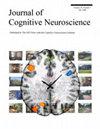Lexical and Information Structure Functions of Prosody and Their Relevance for Spoken Communication: Evidence from Psychometric and Electroencephalographic Data
IF 3
3区 医学
Q2 NEUROSCIENCES
引用次数: 0
Abstract
Prosody not only distinguishes “lexical” meaning but also plays a key role in information packaging by highlighting the most relevant constituent of the discourse, namely, “focus” information. The present study investigated the role of lexical and focus functions of prosody in the coherent interpretation of linguistic input. To this end, we manipulated the correctness of prosodic markers in the context and scrutinized how listeners evaluate these violations—whether they result in lexical or focus anomalies—using psychometric and EEG measures. Psychometric data from 40 participants indicated that prosodic violations were judged as incorrect by the listeners both at the lexical and focus levels, with focus level violations leading to lower correctness scores than lexical level violations, and combined violations receiving the lowest scores. EEG data from 20 participants documented a strong N400 effect (350–550 msec) in response to combined violations, and a late posterior negativity (600–900 msec) present only for combined violations and focus-level violations. Consistent with the psychometric data, the EEG data suggest that prosodic violations at the focus level result in higher costs for comprehension than prosodic violations at the lexical level, whereas combined prosodic violations most significantly disrupt the interpretation. Taken together, these findings suggest that the language comprehension system is sensitive to accurate representations of both lexical and information structure prosody, and benefits from the interaction between them; however, they are weighted differently based on their relevance for a functioning spoken communication.韵律的词汇和信息结构功能及其与口语交流的相关性:来自心理测量和脑电图数据的证据。
韵律不仅区分“词汇”意义,而且通过突出语篇中最相关的成分,即“焦点”信息,在信息包装中起着关键作用。本研究探讨了韵律的词汇功能和焦点功能在语言输入连贯解释中的作用。为此,我们使用心理测量和脑电图(EEG)测量方法,在上下文中操纵韵律标记的正确性,并仔细检查听者如何评估这些违规行为——它们是否会导致词汇或焦点异常。来自40名参与者的心理测量数据表明,听者在词汇水平和焦点水平上都认为韵律违规是不正确的,其中焦点水平违规导致的正确性得分低于词汇水平违规,而综合违规得分最低。来自20名参与者的脑电图数据记录了对联合违反的强烈N400效应(350-550 msec),并且只有在联合违反和焦点水平违反时才出现晚期后验负性(600-900 msec)。与心理测量数据一致,脑电图数据表明,焦点层面的韵律违规比词汇层面的韵律违规造成更高的理解成本,而组合韵律违规对口译的破坏最为显著。综上所述,这些发现表明语言理解系统对词汇韵律和信息结构韵律的准确表征都很敏感,并受益于它们之间的相互作用;然而,根据它们与口语交流的相关性,它们的权重有所不同。
本文章由计算机程序翻译,如有差异,请以英文原文为准。
求助全文
约1分钟内获得全文
求助全文
来源期刊
CiteScore
5.30
自引率
3.10%
发文量
151
审稿时长
3-8 weeks
期刊介绍:
Journal of Cognitive Neuroscience investigates brain–behavior interaction and promotes lively interchange among the mind sciences.

 求助内容:
求助内容: 应助结果提醒方式:
应助结果提醒方式:


